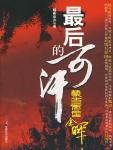Chapter 1 preamble
Reality is the continuation and development of history. Understanding history can learn from the past, so people have a strong interest in history.It’s just that for those who don’t specialize in historical research, the historical knowledge they master often comes from novels, dramas or unofficial history. Although the history shown in it is rich in storylines and interesting, it is far from the real history.Recently, this situation is changing. Many historians have written a large number of popular historical books in simple and easy-to-understand words. In particular, CCTV's "Hundreds of Lecture Forums" are telling history in popular and vivid language, and they are constantly reawakening people. Passion for knowing the true history of the country and nation.
The history that experts and the public are hotly discussing is not balanced. For now, it still focuses on a few famous emperors and dynasties in Chinese history, and there are still many important histories that have not entered everyone's field of vision.For example, in the history of the Mongolian nationality, it is true that there have been several works that commented on the biography of Genghis Khan and Kublai Khan, and there are also related movies and TV dramas broadcast, but they are all works about the peak of the Mongolian nationality in the Mongolian and Yuan Dynasties, reflecting the Mongolian history. There are very few works on Mongolian history after the Yuan Dynasty.In fact, after the Mongol and Yuan Dynasties, the Mongols were still active in the historical stage of China and even Asia and Europe for a long time, and continued to exert an important influence on China and the world. To a large extent, it is related to the activities of the Mongolian people during this period.Therefore, it is undoubtedly a job we should pay attention to to write a popular book that shows the activities of the Mongolian people in the Ming and Qing Dynasties, so that everyone can understand this period of history that should be understood.
To my great delight, the manuscript in front of me is exactly the kind of manuscript we were looking forward to.It shows the political history of Mongolia after the Mongol-Yuan in a panoramic way, including Yexian Khan who reigned briefly in the Northern Yuan Dynasty, Dayan Khan who rejuvenated the golden family of Genghis Khan, Altan Khan who introduced Buddhism from Tibet, and the last Mongolian Dalai Lama who died in the northwest. Khan Lindan Khan, as well as the Junggar Khanate that competed with the Qing Dynasty for the world, the Heshuote Khanate that ruled Qinghai in Tibet for more than 70 years, and the Turghut people who migrated to the Volga River Basin and then resolutely returned. The Yubo Yarkant Khanate of the Chagatai Khanate and the Siberia Khanate of the Golden Horde Khanate are also described, while the Ilkhanate occupying the land of Persia is introduced as an extra chapter.These histories involve the vast area of Central Asia in northern China, northwest China, and west of Xinjiang. The historical facts are complicated and the clues are chaotic. We have sorted out the clues from the lack of and scattered historical materials. After the efforts of several generations of historians, it cannot be said that the problem has been solved. All have been solved, even if you understand the existing related treatises, it is not easy to express them in easy-to-understand language.
But the author of this manuscript has done it. Obviously, the author has put in a lot of effort to read through the relevant treatises, and he has also mastered a lot of historical materials, so he can write the above-mentioned histories one by one in clear language.Moreover, the author is not satisfied with merely describing the historical process, but also thinks deeply about history, narrates and discusses, and often has his own unique insights into the ups and downs of history.The author's language skills are also commendable, the writing is concise and fluent, and there are many wonderful literary descriptions under the premise of respecting history, so that readers can easily read the entire article.It can be said that the author has successfully completed the task of providing reading materials to popularize this period of history, which is indeed commendable.
According to the author's preface, the content of this manuscript was serialized on the Internet and attracted the attention of netizens. They said that they "didn't know much about" the history written, and even "had never heard of it." , or "Beginning to get interested in this".Readers' attention and reaction should be a spur to the author, urging the author to further process the manuscript and strive to make it more perfect.Submitting the revised manuscript for publication will naturally attract more people to pay attention to this period of history, and its popularity will be much wider, which is exactly what the author expects.
The author is a young man in his twenties who loves history and studies diligently.His name, Banburi, means "torch" and "young tiger" in Mongolian. I hope he can continue to light up the dark history with his anger and achieve greater success just like his name. .
Inner Mongolia University Boyin Lake
Fall 2008

